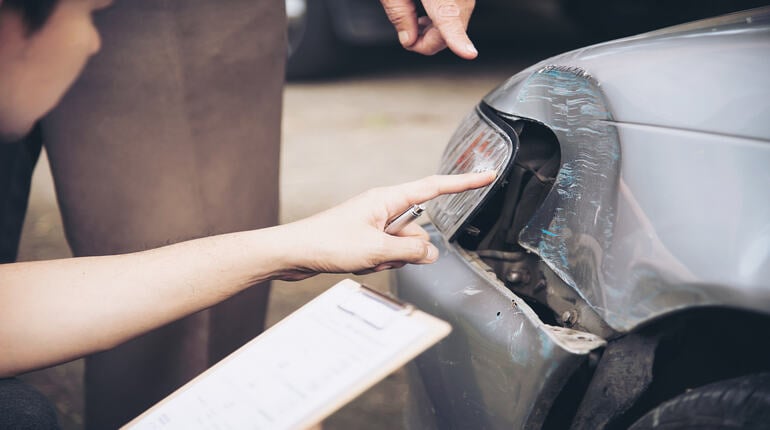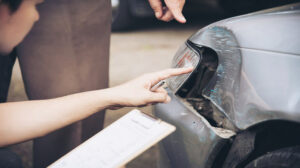Insurance companies write off the car category when they have sustained significant damage, often due to accidents, collisions, or other incidents. The decision to write off a vehicle is typically based on a cost-benefit analysis. If the estimated cost of repairs surpasses the car’s market value, it becomes more economical for the insurer to declare it a write-off, also known as an Insurance Write-off.
For instance, Cat A and Cat B cars are severely damaged vehicles that are typically unsafe to repair and return to the road. Cat S and Cat N vehicles have sustained less severe damage, and you can get an inspection report if it’s roadworthy. Still, it’s important to understand the nature of the damage and repairs completed when considering purchasing a car with one of these designations.
These categories serve as valuable tools for insurance companies and potential buyers, offering transparency and guidance regarding a vehicle’s history and condition.
What are Vehicle Write-Off Categories?
Vehicle categories, often called Cat A, Cat B, Cat S, and Cat N, are classifications insurance companies use to denote the condition of a car that has been involved in an accident or other incidents. These are the car categories that help communicate the extent of damage and the vehicle’s safety to insurers and potential buyers in the used car market.
When a car is written off, it means that the cost of repairing the damages would exceed the vehicle’s estimated value. As a result, insurance companies decide to declare it a write-off/total loss and, based on the severity of the damage, assign one of these categories.
It’s worth noting that before 2017, the UK used the “Cat C” and “Cat D” classifications; however, a change in regulations led to the adoption of the new categories. To avoid confusion, if the write-off occurred after 2017, it will be designated with the new categories – Cat A, Cat B, Cat S, or Cat N.
What is category A write off: Extreme Damage – Beyond Repair
Category A is the most severe classification given to vehicles that have endured extensive and catastrophic damage. When a car is assigned a Category A write-off, it is considered beyond repair. The damage is so profound that it renders the vehicle utterly unroadworthy and unsafe. A Category A car is deemed unsalvageable and its roadworthiness cannot be restored.
A typical example of a Category A write-off includes vehicles that a severe fire has extensively burned out. In such cases, the damage is so extensive that even the vehicle’s structural integrity is compromised, making it unfit for repair, resale, or even dismantling for spare parts. The only recourse for a Category A vehicle is to be scrapped or crushed, ensuring that it is permanently removed from road circulation.
This measure is crucial to maintaining road safety by preventing the use of irreparably damaged cars.
What is Category B write off: Severe Damage – Salvageable Parts
Category B is a classification applied to vehicles that have sustained significant and extensive damage, making them unsuitable for legal road use. While these cars are considered beyond repair, they differ from Category A in one crucial aspect: Category B vehicles can still be utilised for parts or broken down for resale.
For example, a car designated as Category B may have endured substantial damage due to an accident or another incident. While the vehicle cannot be safely restored for road use, certain parts and components may still be salvageable. Salvageable parts are typically carefully removed, tested for safety and functionality, and sold separately. The remaining car portion, which is no longer roadworthy, is responsibly disposed of or destroyed.
This process ensures that salvageable components are reused, reducing waste and adding value while maintaining safety standards.
What is category S write off: Structural Damage Requiring Professional Repair
Category S is a classification applied to vehicles that have experienced significant structural damage. This damage may manifest as chassis twisting or bending, harm to the crumple zone, or major issues with one or more vital components. When a car is designated as Category S, its structural integrity has been compromised due to the damage it has incurred.
For example, a car under Category S may have been involved in a severe collision, resulting in structural issues affecting its safety and roadworthiness. To make a Category S vehicle legally drivable on UK roads, it must undergo professional repair by qualified technicians. These repairs are conducted to ensure that the vehicle’s structural and safety features are fully restored to meet the required safety standards.
The Category S classification replaced Category C in October 2017, reflecting a change in the categorisation system to provide more precise information about the extent and nature of the damage a vehicle has sustained.
What is category N write off: Non-Structural Damage – Cosmetic or Electronic Issues
Category N is a classification used for vehicles without structural damage. Instead, it typically denotes cosmetic or electronic issues that may not be economically viable to repair.
For instance, Cat N write off cars may have cosmetic damage to the bodywork or electronic malfunctions. These problems do not compromise the vehicle’s structural integrity, but they might affect its safety or functionality. Safety-related parts, like brakes or steering components, could be damaged, rendering the car unsafe to drive.
To clarify, Category N write-offs indicate non-structural damage while the vehicle’s structural integrity remains intact. Previously, these cars were known as Category D.
Are category cars harder to sell?
When a vehicle is in an accident and classified as a ‘Cat N’, its desirability among potential buyers decreases. This hesitation leads to a reduction in the car’s market value, making it less appealing than a comparable vehicle that hasn’t been in an accident.
Which car category is legal to sell?
You can sell a Cat N or Cat S car as long as you tell the buyer about its status. You must be clear about this, even if the car has been fixed up to how it was before the accident.
Is car category N expensive to insure?
Insuring a Category N vehicle can often lead to higher insurance costs. In some cases, you may experience increased premiums, and there’s the possibility of insurance providers refusing coverage altogether.
Conclusion:
When buying a used vehicle, knowledge is your greatest ally. While Category N cars can offer tempting prices, it’s essential to research the history of any car you’re considering thoroughly. Protect your investment and safety by taking a car history report.
Car Analytics provides information on a car category check, outstanding finance, police-stolen records, and more. This data helps you make an informed decision and ensures you’re purchasing a used vehicle confidently.
Ready to take action? Get started with a free car check and upgrade to a full check if needed at £9.95.






